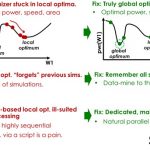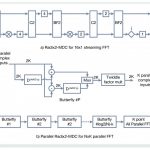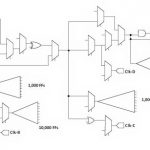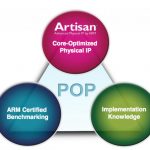Of course that reduction has to stay throughout the design cycle up to layout implementation and fabrication. Since the advent of high density, mega functionality SoC designs at advanced nodes and battery life critical devices played by our fingertips, the gap between SoC power requirement and actual SoC power has only increased.… Read More
Tag: optimization
Key Ingredients for ESL Power Modeling, Simulation, Analysis and Optimzations
There’s a French EDA company named DOCEA Powerthat is uniquely focused on power analysis at the ESL level and I had a chance to interview Ridha Hamza to get new insight on ESL design challenges and their approach. Ridha started out doing SRAM design at STMicroelectornics in the 1990’s, moved into the emerging field … Read More
Untangling snags earlier and reducing area by 10%
The over 20 years of experience behind Synopsys Design Compiler is getting a new look for 2014, and we had a few minutes with Priti Vijayvargiya, director of product marketing for RTL synthesis, to explore what’s in the latest version of the synthesis tool.
Previewed today, Synopsys Design Compiler 2013.12 continues to target … Read More
High-Sigma Standard Cell Optimization!
Standard cell optimization is an important problem, because the speed, power, and area of cells has a direct impact speed, power, and area of the whole chip. Typically, standard cell optimization been done with simple in-house local-optimizer scripts. However, these optimizers have had several flaws: they don’t properly capture… Read More
What’s in your network processor?
Recently, one of those very restrained press releases – in this case, Mentor Graphics and Imagination Technologiesextending their partnership for MIPS software support– crossed my desk with about 10% of the story. The 90% of this story I want to focus on is why Mentor is putting energy into this partnership… Read More
Gigahertz FFT rates on a 500MHz budget
A basic building block of any communication system today is the fast Fourier transform, or FFT. A big advantage of FPGA implementations of FFTs is they can be scaled and tuned for the task at hand, optimizing data flow, resource use, and power consumption. Scaled, that is, up to the clock speed of the FPGA – or so it would seem.
Today’s… Read More
When the lines on the roadmap get closer together
Tech aficionados love roadmaps. The confidence a roadmap instills – whether using tangible evidence or just a good story – can be priceless. Decisions on “the next big thing”, sometimes years and a lot of uncertain advancements away, hinge on the ability of a technology marketing team to define and communicate a roadmap.
Any roadmap… Read More
Cortex-A9 speed limits and PPA optimization
We know by now that clock speeds aren’t everything when it comes to measuring the goodness of a processor. Performance has direct ties to pipeline and interconnect details, power factors into considerations of usability, and the unspoken terms of yield drive cost.
My curiosity kicked in when I looked at the recent press release… Read More
40 Billion Smaller Things On The Clock
Big processors get all the love, it seems. It’s natural, since they are highly complex beasts and need a lot of care and feeding in the EDA and fab cycle. But the law of large numbers is starting to shift energy in the direction of optimizing microcontrollers.
I mulled the math in my head for a while. In a world with 7 billion people and … Read More
Making your ARMs POP
Just in time for TSMC’s technology symposium (tomorrow) ARM have announced a whole portfolio of new Processor Optimization Packs (POPs) for TSMC 40nm and 28nm. For most people, me included, my first question was ‘What is a POP?’
A POP is three things:
- physical IP
- certified benchmarking
- implementation knowledge









